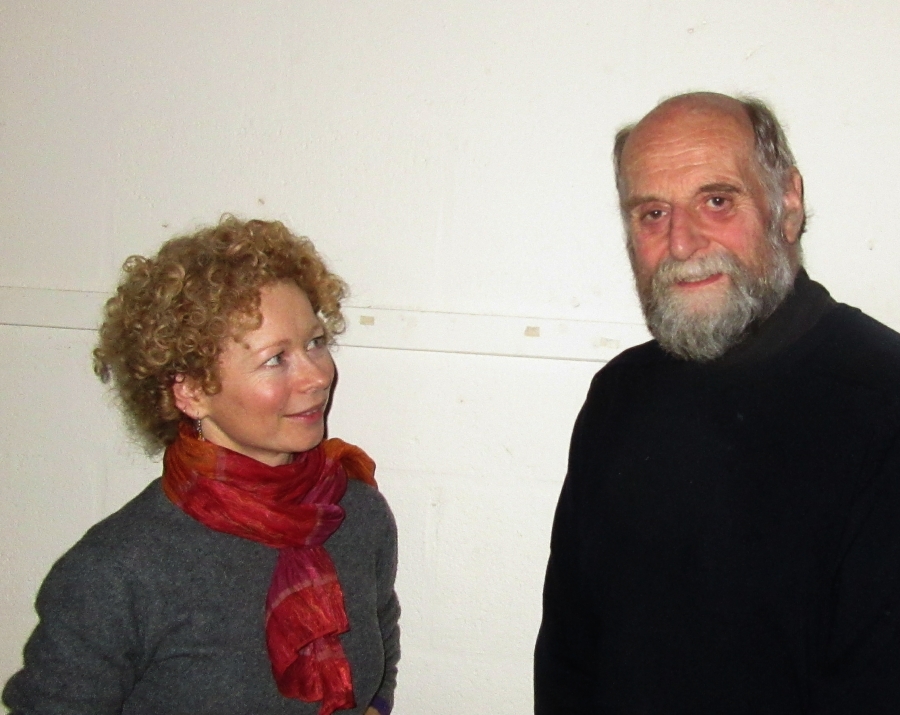 In a fascinating and challenging talk at our AGM, 22-1-2015 on Pricing Your Work Sarah Sparke shared with us some of the insights she has developed while working on her Ph.D. and since then with her continuing research in Bristol.
In a fascinating and challenging talk at our AGM, 22-1-2015 on Pricing Your Work Sarah Sparke shared with us some of the insights she has developed while working on her Ph.D. and since then with her continuing research in Bristol.
 Concentrating on a range of straightforward, obvious, yet infrequently examined questions such as “Why do you want to price your art?”, “What do you want your price to do?” and “How do you go about it?” Sarah uncovered and explored the simple truth that any object seen as a work of art is always evaluated as part of a complex, socially constructed reality. No art object can be seen simply “on its own”. It is always seen within a context which affects how the object – and its price – is understood- such as a gallery, exhibition space, home or art shop. How that context, object and price are understood will vary from person to person, but there will be some shared ‘interpretive rules’. – A context may communicate a sense that here is something of special value, e.g. if it is placed within the Tate, or of much less value if shown in the home of an unknown artist. Objects she saw as sharing in a related sense of value she referred to as belonging to a shared cohort, a military metaphor that seemed to work rather well.
Concentrating on a range of straightforward, obvious, yet infrequently examined questions such as “Why do you want to price your art?”, “What do you want your price to do?” and “How do you go about it?” Sarah uncovered and explored the simple truth that any object seen as a work of art is always evaluated as part of a complex, socially constructed reality. No art object can be seen simply “on its own”. It is always seen within a context which affects how the object – and its price – is understood- such as a gallery, exhibition space, home or art shop. How that context, object and price are understood will vary from person to person, but there will be some shared ‘interpretive rules’. – A context may communicate a sense that here is something of special value, e.g. if it is placed within the Tate, or of much less value if shown in the home of an unknown artist. Objects she saw as sharing in a related sense of value she referred to as belonging to a shared cohort, a military metaphor that seemed to work rather well.
For example she explored the pricing implication of considering the object as Art or Craft or as Contemporary Craft, for each of these labels refers to a special collective context or cohort, with associated price-expectations. She pointed out that for many audiences, ‘craft’ is associated with lower prices, whereas ‘Contemporary Craft’ has a higher ceiling.. Works in different media and of different sizes likewise fall into cohorts, be it cast bronze, oil, watercolour, etching or pencil, here listed in descending value and yes, size matters. Then there is the ‘cultural biography of the object’, i.e. what is known of the artist and her or his work. This might include attendance at a prestigious art school which may make perceived value seem more than the work of someone “Self-Taught.” It might however be that rather than art education the record of the artist in having exhibited in prestigious galleries is seen as even more important than having attended the Slade. Other information might include the peer group the artist belongs to, a particular source of inspiration/precedent, or their mastery of a particular technique. These can all be ‘read’ as signals of quality, and give reassurance that the price is apt.
And when it comes to value and we look at the money involved in the buying and selling of art, again she explained that the money itself also has a socially and emotionally constructed reality which is dependent on a high degree of subjectivity. The same price may be seen as ‘the right price’ if the work is bought for a very special occasion or situation, but exorbitant if being bought as decoration for a hotel room. For some audiences/clients, too low a price would suggest that the work is not ‘art’, or not within the cohort of art and artists they would think worth considering.
When it came to advice Sarah suggested that the first step is always careful research into current pricing, promotional and placement practices for what you consider to be ‘your type of work’, in order to understand how your practice compares. She suggested that it is well worth doing this as a written exercise to help crystalise one’s thoughts , and that it is done frequently, so that it becomes a habit,. The next step might be to discuss pricing of other people’s work (maybe seen at an exhibition) and of your work with those who you admire and with those who you think share the cohort you see yourself belonging to, as well as with those you disagree with.
 She then suggested that it is better to start relatively low as seen within your chosen cohort for the best basis for growth in value is sales. She also advised strongly against cutting prices in any obvious way as in offers of twenty per cent off. Both customers and galleries can feel very let down to find that work they have seen priced and have paid good money for is being moved on by the artist at a much lower rate. That devalues their purchase and the artist’s reputation.
She then suggested that it is better to start relatively low as seen within your chosen cohort for the best basis for growth in value is sales. She also advised strongly against cutting prices in any obvious way as in offers of twenty per cent off. Both customers and galleries can feel very let down to find that work they have seen priced and have paid good money for is being moved on by the artist at a much lower rate. That devalues their purchase and the artist’s reputation.
Finally she emphasised the entry into a higher or more exclusive cohort can, all other things being equal, be dependent on the most meticulous attention to detail, such as labelling and the display of prices – so pay close attention to what the big boys and girls are doing. Then there is how you dress and what you say about your work. Absolutely everything about you counts – though I guess she meant a nice frock or a spotted bow tie and a beard is not always necessary.
Her talk stimulated the largest number of questions from the floor I have ever heard and members queued up to speak to her after that. She also perhaps rather rashly offered to come down at the time of our next exhibition and discuss pricing with members then. In all a memorable afternoon.
John Baxter checked over by Sarah